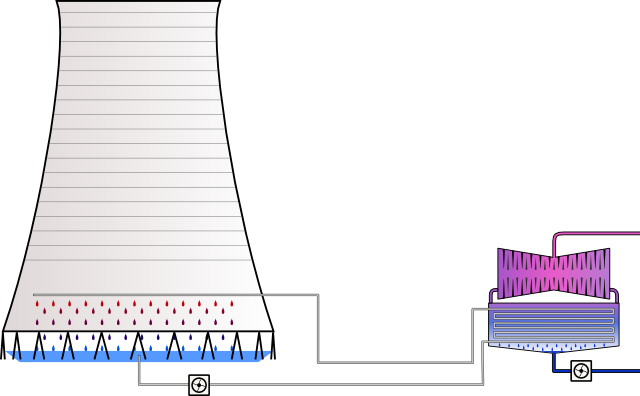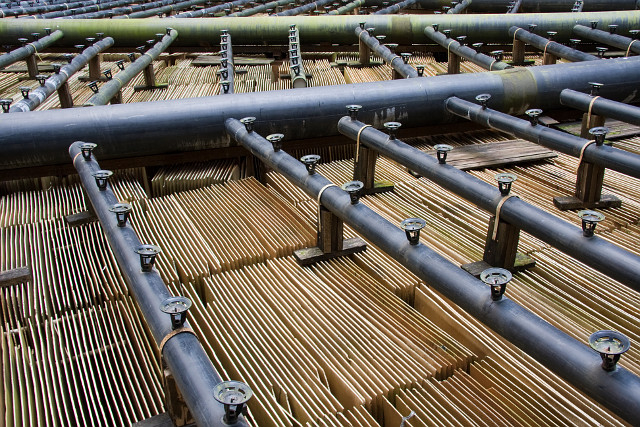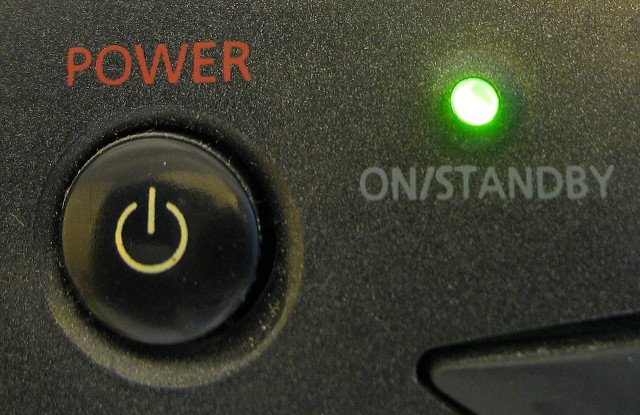
A pair of metal cooling towers at a power station in the Ukraine.
Cooling towers are an essential part of many power stations. Although they are most commonly associated with nuclear power stations, they are found in any power station that uses heat from burning fuel to generate electricity. (Drax, a coal-fired power station that is the largest in Western Europe at 3960 megawatts has twelve cooling towers.)
An aerial view of Drax coal-fired power station.
The purpose of a cooling tower is to extract waste heat from the power station so that the working fluid (water) can be reused. This waste heat passes into cold water, heating it in the process, and this warm water is then fed into the cooling tower where it cools and is then reused. The separation of the working fluid (purple and blue) and the waste heat extraction (grey pipes) is obvious in the diagram below.

The space below the water inlet is filled with a material designed to increase the surface area of the water in contact with the air, helping to speed up the process of heat loss.

Fill plates mounted underneath the outlet nozzles.
The hyperboloid shape of cooling towers ensures continuous non-turbulent airflow, maximising the amount of air per unit time moving through the tower. Air enters at the bottom of the tower and accelerates up the tower as it is heated by the warm water, drawing fresh cool air in at the bottom due to the stack effect. In the photograph of a disused cooling tower below, the spaces at the bottom of the tower through which air enters are clearly visible.

Source: Tom Blackwell


